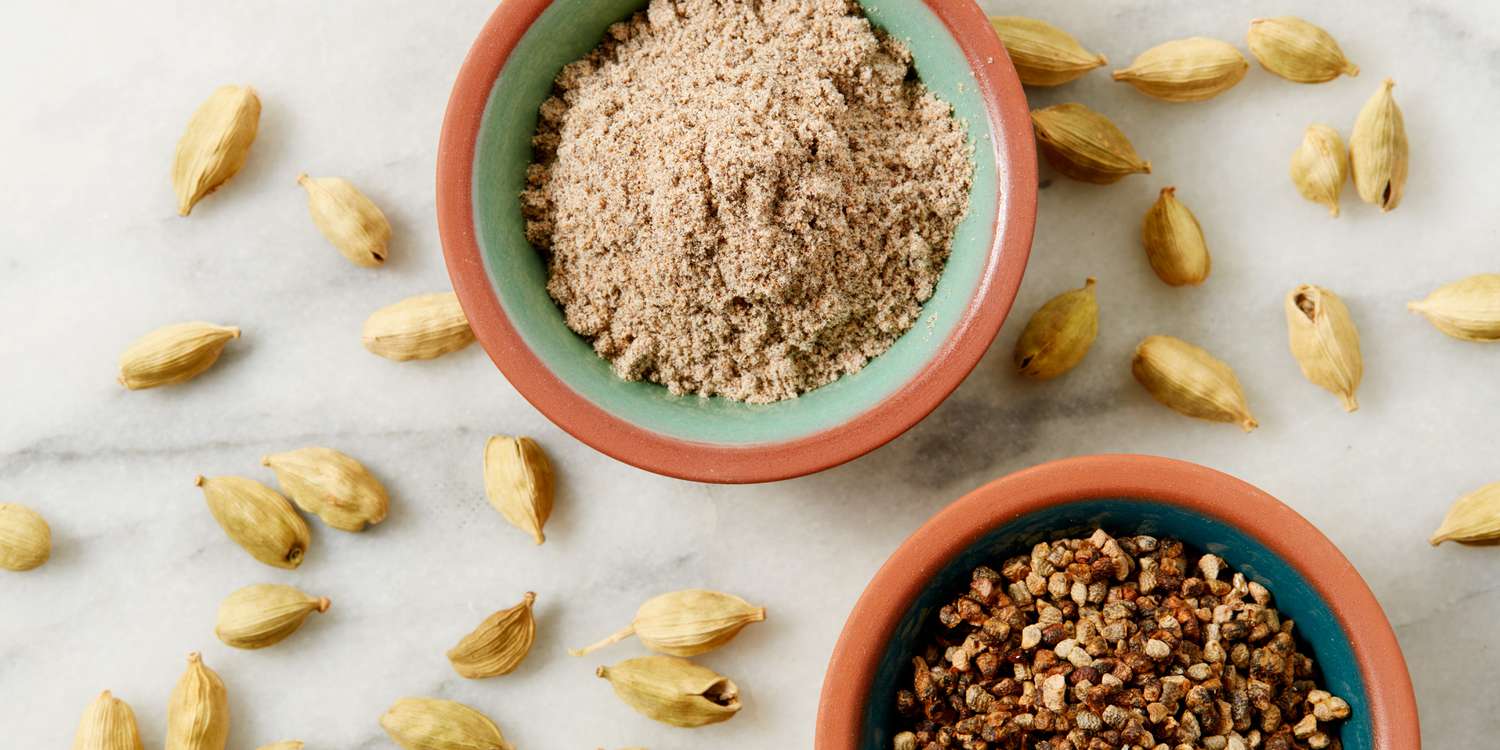Cardamom is a familiar name in the spice world, but if asked to describe its flavor, you may be at a loss for words. This is because this spice has an extremely complex flavor profile, lending itself to both sweet and savory dishes. As the third most expensive spice in the world (only behind saffron and vanilla), cardamom has made quite a name for itself, even earning the nickname “The Queen of Spices.” From Indian curries to Scandinavian breads, learn how to cook with this prized spice.
What Is Cardamom?
Cardamom is a pod spice in the ginger family that is commonly used in Indian cuisine. Although this spice originated in southern India, today Guatemala is the largest producer of cardamom.
The spice can be found as a whole pod, shelled whole seeds, or ground powder. Its complex flavor profile lends itself well to both sweet and savory applications, and it boasts numerous health benefits as well (more on that below).

ALLRECIPES / ISABELLA DIRENZO
Types of Cardamom
Green Cardamom
This is the more common variety of cardamom. It is often used in sweeter dishes, although it will work in savory as well. Green cardamom’s flavor is more of what you would imagine when you think of cardamom: warm, herbal, citrusy, spicy, and even a bit minty all at the same time — impressive, right?
You might also find what’s known as “white cardamom,” which is simply green cardamom that has been bleached. It tends to have a more faded flavor, but is a favorite throughout Scandinavian countries and much of northern Europe.
Black Cardamom
With its larger, dark brown pods, black cardamom is more commonly used in savory dishes due to its smokier flavor. When you see black cardamom called for in a recipe, it’s usually the whole pod that is meant to be used.
Cardamom Pods vs. Ground Cardamom
Cardamom always starts out in the form of a pod. Sometimes, a recipe may call for a whole crushed cardamom pod to be added during cooking, and discarded afterwards, much as you would do with bay leaves.
The pods contain hard, black seeds that are usually dried and ground to make a powder. These seeds contain the essential oils that give the spice its distinct flavor. Once the seeds are ground, they begin to lose their flavor quickly. For best results, use ground cardamom close to its purchase date, or better yet, start with whole pods. You can easily grind the seeds down using a mortar and pestle.
What Is Cardamom Used For?

Many Indian and Indian-inspired dishes call for cardamom, including curry dishes, Kheer (Indian rice pudding), and chai. Indian spice blends such as garam masala also feature cardamom.
You’ll also find cardamom adds warmth and depth to baked goods such as cookies, bread pudding, and even cheesecake. At some point, cardamom made its way to Scandinavia, where it is now widely used in baked goods, such as Finnish Pulla and Julekaka (a Norwegian Christmas bread).
For savory applications, try adding it to soups or in dry rubs for meat. This Cardamom Maple Salmon recipe is another example of how cardamom’s sweet and spicy flavor can be applied in different ways.
How to Cook With Cardamom
When cooking with cardamom, consider starting with whole pods and grinding your own powder from the seeds. To do so, first toast the pods in a skillet. This helps bring out the flavor and makes it easier to open. From here you can remove the seeds from the pods and grind them by hand. Be sure to save the empty pods — they can be used to infuse coffee or teas. You can usually find whole cardamom pods in the spice aisle or the international aisle. If not there, try international grocery stores.
Health Benefits of Cardamom
Cardamom has been used as both an ingredient in cooking and as a medicine for centuries, and research suggests that the spice does indeed have health benefits. A 2009 study demonstrated that the high levels of antioxidants in cardamom may help lower blood pressure, while a 2007 study found cardamom to have diuretic properties, meaning it can promote urination. It has also been used as a breath freshener for centuries, and this claim was backed up by a recent study that found cardamom to be effective at disrupting bacteria that can lead to gum disease or infections.
What Is a Substitute for Cardamom?
Cardamom’s complex flavor means that finding a proper substitute for it is no small task. In a pinch, we suggest blending other warm, autumnal spices together to mimic its distinct flavor, particularly cinnamon. Try mixing equal parts ground cinnamon with equal parts ground nutmeg, ginger, or cloves.
Related:
- 15 Cardamom Dessert Recipes That Are Fragrant and Flavorful
- Browse our entire collection of Cardamom Recipes.




